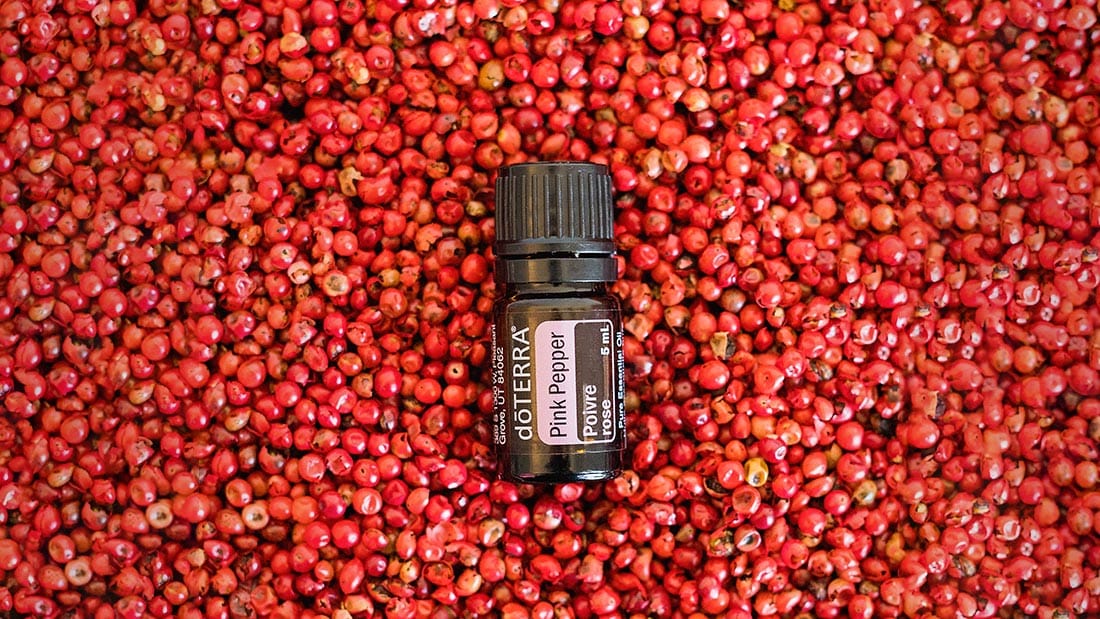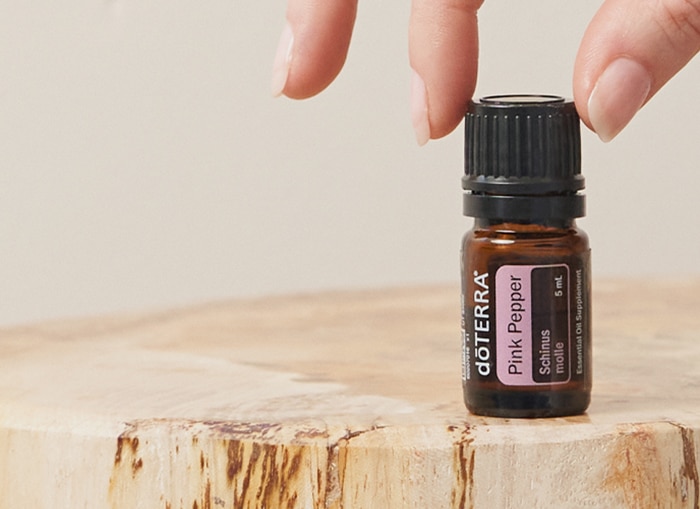Pink peppercorn oil and its culinary applications

Pink peppercorn oil, derived from the berries of the Brazilian pepper tree, offers a unique and versatile flavor profile that elevates a wide range of culinary creations. In this exploration, we delve into the origins, extraction process, and diverse culinary applications of pink peppercorn oil, unveiling its potential to enhance dishes with its delicate spice and vibrant aroma.
Origins of Pink Peppercorn Oil: From Tree to Extract
Pink peppercorns, scientifically known as Schinus molle, are harvested from the Brazilian pepper tree, native to South America. The berries undergo a meticulous extraction process to yield the precious pink peppercorn oil. This process typically involves crushing or grinding the berries to release their aromatic oils, followed by steam distillation or cold pressing to extract the essence of the pink peppercorns.
Distinctive Flavor Profile: A Symphony of Spice and Sweetness
Pink peppercorn oil is prized for its delicately spicy and subtly sweet flavor profile, which sets it apart from traditional black pepper oil. The oil carries notes of citrus, floral, and fruity undertones, creating a multidimensional taste experience that tantalizes the palate. Its nuanced flavor profile makes it a versatile ingredient in both savory and sweet dishes, adding depth and complexity to culinary creations.
Culinary Applications: Unleashing the Creative Potential
Pink peppercorn oil lends itself to a myriad of culinary applications, offering chefs and home cooks alike the opportunity to experiment and innovate in the kitchen. Its delicate yet distinctive flavor makes it a versatile ingredient in sauces, dressings, marinades, and condiments. It can also be used as a finishing oil, drizzled over salads, grilled vegetables, seafood, or meats to impart a subtle yet sophisticated flavor.
Sauces and Dressings: Adding Depth and Complexity
In sauces and dressings, pink peppercorn oil adds depth and complexity to a variety of dishes. It can be incorporated into creamy sauces for poultry or seafood, where its floral and citrus notes complement the richness of the dish. Likewise, it can be blended with vinegar, citrus juice, and herbs to create vibrant salad dressings that elevate the flavor profile of fresh greens and vegetables.
Marinades and Glazes: Infusing Flavor and Aroma
Pink peppercorn oil serves as an excellent base for marinades and glazes, infusing meats, poultry, and seafood with its aromatic essence. When combined with complementary ingredients such as garlic, herbs, and citrus zest, it creates a flavorful marinade that tenderizes and enhances the natural flavors of the protein. Whether grilling, roasting, or sautéing, pink peppercorn oil imparts a subtle yet irresistible aroma to dishes.
Baking and Desserts: A Sweet Surprise
In baking and desserts, pink peppercorn oil offers a delightful twist to traditional recipes. It can be infused into cakes, cookies, and pastries, adding a subtle hint of spice and sweetness. Pink peppercorn oil pairs particularly well with chocolate, berries, and citrus fruits, creating decadent desserts that delight the senses and leave a lasting impression.
Seasoning and Garnishing: A Finishing Touch
As a finishing oil, pink peppercorn oil adds a touch of elegance and sophistication to dishes. It can be drizzled over grilled meats, roasted vegetables, or creamy soups to enhance their presentation and flavor profile. Sprinkled atop salads or appetizers, it adds a pop of color and texture, transforming ordinary dishes into culinary masterpieces.
Exploring Flavor Combinations: Pairing Pink Peppercorn Oil with Ingredients
Pink peppercorn oil blends harmoniously with a variety of ingredients, allowing chefs to create dynamic flavor combinations that tantalize the taste buds. It pairs well with citrus fruits, herbs like thyme and rosemary, creamy cheeses, and earthy vegetables like mushrooms and asparagus. Its versatility makes it a valuable tool for culinary experimentation and exploration.
Health Benefits and Considerations: A Holistic Approach
In addition to its culinary applications, pink peppercorn oil is believed to offer various health benefits, including antioxidant and anti-inflammatory properties. However, it’s essential to use pink peppercorn oil in moderation, as excessive consumption may lead to digestive discomfort or allergic reactions in some individuals. As with any culinary ingredient, it’s advisable to consult with a healthcare professional before incorporating pink peppercorn oil into your diet, especially if you have underlying health concerns or dietary restrictions.
Elevating Culinary Creations with Pink Peppercorn Oil
In conclusion, pink peppercorn oil is a culinary gem that adds depth, complexity, and sophistication to a wide range of dishes. Its delicate flavor profile and vibrant aroma make it a versatile ingredient in sauces, marinades, dressings, and desserts, offering endless opportunities for culinary creativity and innovation. Whether used by professional chefs or home cooks, pink peppercorn oil is a testament to the artistry and exploration inherent in the culinary world, inviting us to savor the beauty and bounty of nature’s bounty with every delectable bite.
FAQ:
- What is pink peppercorn oil? Pink peppercorn oil is an essential oil extracted from the berries of the Brazilian pepper tree, Schinus molle. It possesses a delicately spicy and sweet flavor profile with citrus and floral undertones.
- How is pink peppercorn oil extracted? Pink peppercorn oil is typically extracted through a process of steam distillation or cold pressing. This process involves crushing or grinding the berries to release their aromatic oils, followed by extraction using heat or pressure.
- What are the culinary applications of pink peppercorn oil? Pink peppercorn oil can be used in sauces, dressings, marinades, and desserts to add flavor and aroma. It also serves as a finishing oil, drizzled over dishes to enhance their presentation and taste.
- Is pink peppercorn oil safe for consumption? Pink peppercorn oil is generally safe for consumption when used in moderation. However, it’s essential to dilute it properly and use it sparingly to avoid overwhelming dishes with its flavor.
- Can pink peppercorn oil be used in baking? Yes, pink peppercorn oil can be used in baking to add a subtle hint of spice and sweetness to cakes, cookies, and pastries. It pairs well with chocolate, berries, and citrus fruits in dessert recipes.
- Are there any health benefits associated with pink peppercorn oil? Pink peppercorn oil is believed to possess antioxidant and anti-inflammatory properties. However, its health benefits have not been extensively studied, and it should be used as part of a balanced diet and healthy lifestyle.
- How should pink peppercorn oil be stored? Pink peppercorn oil should be stored in a cool, dark place away from direct sunlight and heat sources to preserve its flavor and potency. It’s best to keep it tightly sealed in a glass bottle to prevent oxidation.
- Can pink peppercorn oil be used for aromatherapy? While pink peppercorn oil is primarily used for culinary purposes, it can also be used in aromatherapy to create a warm and uplifting atmosphere. It blends well with other essential oils like citrus, lavender, and cedarwood.
- Are there any precautions to consider when using pink peppercorn oil? Some individuals may be allergic to pink peppercorns or essential oils derived from them. It’s essential to perform a patch test before using pink peppercorn oil topically or internally and consult a healthcare professional if any adverse reactions occur.
- Where can I purchase high-quality pink peppercorn oil? High-quality pink peppercorn oil can be found at specialty spice shops, gourmet grocery stores, and online retailers that specialize in culinary ingredients and essential oils. It’s important to choose reputable brands known for their quality and purity.
Related Posts
Where does pink peppercorn come from?
-
Posted by
akshita aishwarya
- 1 comment



